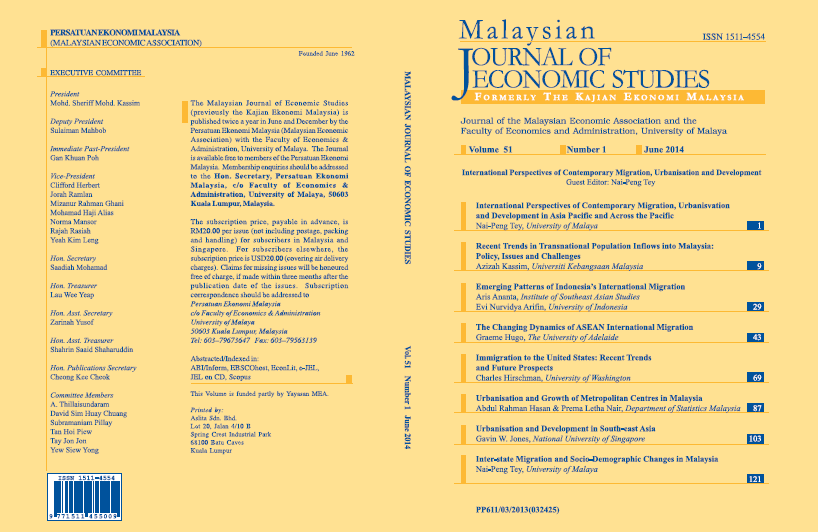Emerging Patterns of Indonesia’s International Migration
Keywords:
Demography, economic integration, labour market, population mobility, return migrantAbstract
Indonesia has undergone tremendous changes, especially since 1998, when people began to realise their human rights to start off the democratisation process. This political change is facilitated by demographic changes, especially increased mobility of the population, and rapid economic growth at 6.0 per cent and over since 2007, except during the global recession in 2009. Contemporary population issues in Indonesia are very different from those in 1970s and even 1990s. High fertility and population growth are no longer pressing problems. However, population ageing and migration have become increasingly important emerging issues. Furthermore, the large and ever growing population, along with high economic growth, has led to Indonesia emerging as a global economic powerhouse. This paper attempts to examine some new trends in Indonesia’s international migration, both out-migration from and in-migration to Indonesia. More and more Indonesians have moved to other countries to pursue higher education and job opportunities, and to settle down. On the other hand, rapid economic growth and the large consumer market have attracted increasing number of foreigners to work and invest in Indonesia. International population mobility is becoming a more important demographic process, with profound ramifications on economic development in Indonesia and other countries, in ASEAN and beyond.

